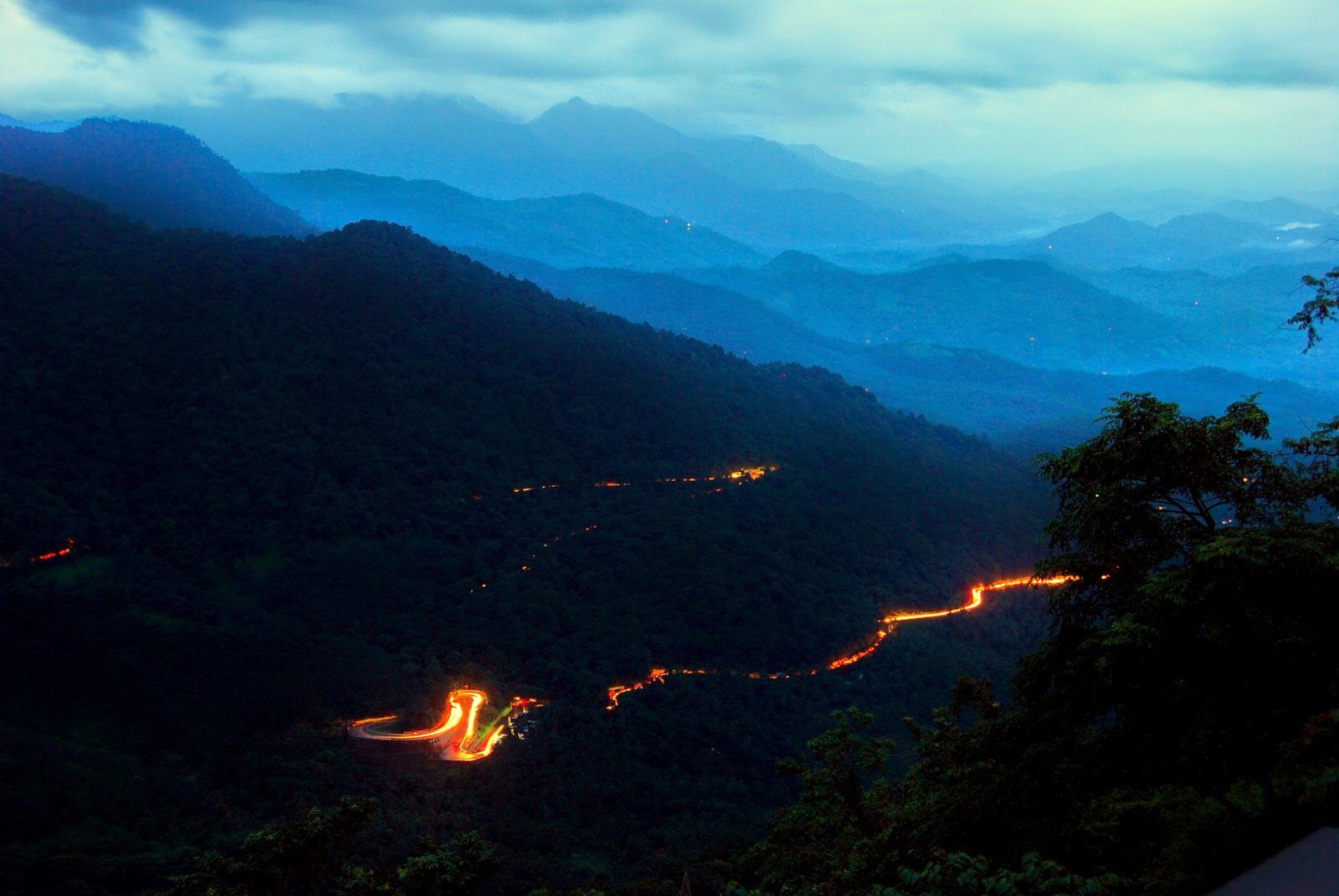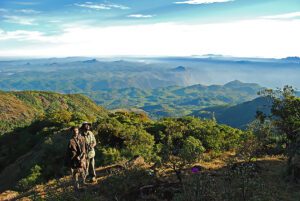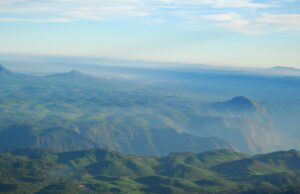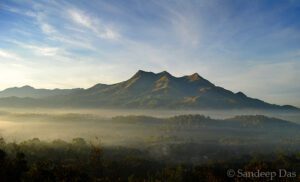The Pinarayi Vijayan-led Kerala government faces stiff opposition from environmentalists and the public for undertaking the controversial multi-crore project.

The present Wayanad Ghat Road. Photo: S Dhruvaraj
After the shelving of its much-touted SilverLine semi-high-speed rail project in the face of environmental, social, and economic hurdles, the Pinarayi Vijayan-led Kerala government is now embarking on another contentious multi-crore project — a tunnel road that promises improved connectivity between northern coastal city Kozhikode and Karnataka’s capital Bengaluru via picturesque Wayanad and Bandipur.
According to government officials, land acquisition for the third-largest tunnel road in the country has already begun in the state’s Kozhikode and Wayanad districts, and construction work on the ₹858 crore project is expected to begin in January next year.
However, the chief minister’s much-touted dream project has attracted criticism from environmental groups since it’s expected to tunnel through 6.8 km of a critically-fragile natural region in the Western Ghats.
The Konkan Railway Corporation Limited (KRCL) is conducting survey work for the project on behalf of the state, and the government claims that it will greatly reduce traffic congestion in the Wayanad Ghat road region.
However, according to critics, the state administration has embarked on a big multi-crore project without conducting a financial feasibility study, an environmental impact assessment, or a sociological impact assessment.
According to the rules, all such studies must be done before initiating such projects. Environmentalists fear that the tunnel project will generate hundreds of tonnes of rock, harming the rich biodiversity of the highly-sensitive region with historic elephant trails.
They also allege that, once completed, the tunnel route may cause natural disasters in the districts of Wayanad and Kozhikode, which are already prone to annual floods and landslides.

A view of Vavul Mala. (Sandeep Das)
Vavul Mala, which resembles a camel’s hump, is the highest point in Kozhikode district, standing at 7,677 feet. Vavul Mala is one of the most environmentally-sensitive areas of the Western Ghats, sharing a border with the mountain regions of Wayanad in Kerala and the Nilgiris in neighbouring Tamil Nadu.
Environmentalists have pointed out that Vavul Mala and its surroundings are home to various flora and wildlife that can only be found in the Western Ghats’ Nilgiris-Wayanad-Coorg stretch.
It is one of the Western Ghats’ wettest places, with the most rain falling during the Southwest Monsoon.
Chembra Peak, one of Wayanad’s premier eco-tourism sites with a lake at the top, is a short distance away.
The natural lake, in the shape of a heart, is tucked in a Shola forest, home to several rare bird species, including the highly endangered Banasura laughingthrush, also known as the Banasura Chilappan.
If Vijayan’s dream proposal materialises, passengers might eventually crisscross a number of environmentally-sensitive areas via the 6.8-km underground tunnel rather than go through them directly.
In August 2019, a large landslide occurred in Puthumala, an ecologically-fragile region near Chembra and Vavul Mala. As a result of the catastrophe, 11 people were killed and six are still missing.
Surface soil erosion caused soil piping, which was one of the main causes of the disaster that destroyed many buildings and a sizeable stretches of agricultural land.
The tunnel road will, according to the existing proposal, run beneath the surface of Puthumala.
In 2019, the Geological Survey of India advised the state government to allow only the bare minimum of human interference in the sensitive area.
According to Chief Minister Vijayan, the two-lane subterranean tunnel route will provide an alternative to the current Thamarassery Ghat route, which is congested during peak hours.
When questioned by the media about environmental concerns, Pinarayi indicated that the tunnel road would only be completed by “protecting the ecosystem and forests of the Western Ghats stretch”.
He claimed that when construction work begins, the landslide vulnerabilities of Puthumala and neighbouring Meppadi will be considered.

The forest region between Kozhikode and Wayanad. (Sandeep Das)
According to N Badusha, president of the environmental organisation Wayanad Prakrithi Samrakshana Samithi, the tunnel will end in the Meppadi region of Wayanad, a high-intensity rainfall area that receives excess rains every monsoon.
The Gadgil and Kasturirangan Committees, which reviewed environmental deterioration in the Western Ghats, rated Meppadi as a highly susceptible location. The territory is also a haven for Asian elephants.
“According to the authorities, an underground tunnel would not impair the region’s rich woods or virgin slopes. Regardless, it refuses to conduct any expert study. We believe that mining barons swayed the decision based on the granite and stones to be drilled and removed,” Badusha told South First.
Sreedhar Radhakrishnan, an environmentalist, said that the tunnel project proves that literate Kerala has yet to learn lessons from the floods that inflicted catastrophic damage in both Wayanad and Kozhikode districts in the recent past.
“The so-called development lobby is attacking the state’s remaining green cover. They are carrying out the goal of vested interests with enormous greed to steal natural resources,” he told South First.
The tunnel project, he claimed, might generate hundreds of tonnes of rock, harming the fragile region’s unique wildlife. Additionally, tunnelling will interrupt elephant migration routes in the region.
While the government maintains that the project will make Wayanad inhabitants happy, several of the district’s residents have expressed reservations about its feasibility.
The government can minimise traffic congestion by extending the Thamarassery Ghat Road and widening the Vadakara-Kuttiyadi-Mananthavady road, they say.
“Because of climate change, floods and landslides have become an annual occurrence in Wayanad. Such ostensible development measures would exacerbate the issue,” said K Raveendran, a resident of Pozhuthana near Vythiri and an active part of Wayanad’s hospitality industry.
During the 2018 floods, Vythiri and surrounding areas saw the most landslides, and rubble devastated the local bus stop and police station. Vythiri is close to the tunnel road’s proposed alignment.
CK Saseendran, CPI(M) leader and a former Kerala Legislative Assembly member from Kalpetta in Wayanad, said that the tunnel road would help Wayanad develop further by shortening the 31-km journey between Kalpetta and Kozhikode.
“The existing route between the two districts includes a 13-km ghat section with nine hairpin bends. It is now the most congested portion of National Highway 212, which connects Kozhikode and Kollegala in Karnataka. Minor landslides and heavy rains frequently damage the ghat road,” he told South First.
Saseendran claimed that the tunnel road would provide a long-term answer to the district’s transport issues. According to the alignment, the tunnel road will commence at Swargam Kunnu, near Kodenchery in Kozhikode district.
According to the chief minister, the tunnel would be completed in 34 months, beginning in January 2024.
“According to the Kerala government, a technical feasibility assessment for the project was conducted. However, that report is unavailable in any public domain,” Babu Mailapadi, another environmentalist in Wayanad, told South First.
“The government has now granted the project contract to KRLC, which specialises primarily in railway tunnel construction. Furthermore, the same agency is now in charge of environmental impact assessment (EIA), in addition to beginning scientific investigations and feasibility testing for the project,” he alleged.

The Chembra Peak in Wayanad. (Sandeep Das)
Outsourcing the feasibility research to a company that has already been selected for construction, he believes, is a procedural failure. Furthermore, he contends that it renders the entire purpose of EIA ineffective.
Only an entity accredited and approved by the Quality Council of India can undertake EIA for any large-scale project, state the guidelines. The agency, on the other hand, has not accredited KRCL.
The Kerala Infrastructure Investment Fund Board supports the project’s expenses, government sources said.
According to the Wayanad Prakrithi Samrakshana Samithi, the tunnel project will influence numerous feeders of the Chaliyar river that originate in the Wayanad-Kozhikode mountains.
“The rock formations in these mountains are around 150 million years old. Furthermore, this region gets 1,000 mm of rain per day. It is important to note that in-depth studies are required to determine whether the tunnel’s construction would destabilise the structure of the entire mountain range,” said Badusha.

May 09, 2024

May 09, 2024

May 09, 2024

May 09, 2024

May 09, 2024

May 09, 2024